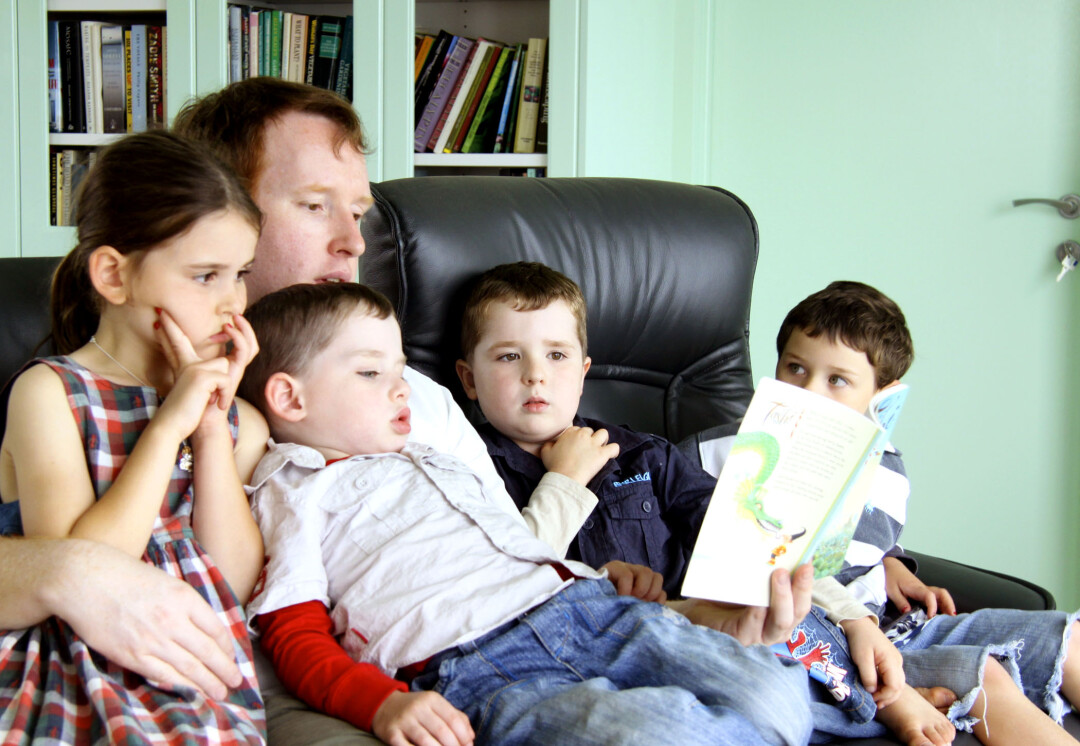6 Ways to Make Storytime More Magical

I will admit it: I am in love with the smell of my daughter’s hair. I smell it every night as I rest my chin on the side of her face while cozying up to read a book in the most uncomfortable chair for an expectant mother. When we read, I love the way her little body tightens during an exciting or scary part of a story. I love the innocent questions that pop into her head. The wise predictions she makes after looking at the illustrations. The tears that well up in her big blue eyes when a character does something heroic or thoughtful. And the stories of adventures and misgivings she tells based on some of her favorite characters. For me, these quiet, silly, and focused moments with my daughter and a good book make my long days and tiresome evenings completely worth it. They’re my golden opportunity to escape with her.
The educational value associated with reading to a child isn’t hard to quantify. According to growingwisconsinreaders.org, planting the lifelong reader seed starts at conception or birth. Reading to a baby will grow learning foundation roots. Reading to a toddler, who sponges up information like a seed takes in water, can increase his ability to recognize letters in the alphabet, words that rhyme, or connect words to senses and emotions. As the budding reader begins to blossom, it becomes easier for him to recognize familiar words and comprehend the plot of a story. But if a young child isn’t read to regularly, the Wisconsin Department of Public Instruction warns he may not be fully prepared to become a strong, independent reader on his own.
Pairing up with two of the Chippewa Valley’s finest children’s librarians – Jessi Peterson and Jenna Gilles-Turner – we developed a list of how-tos and why-fors for anyone looking to make story time for any age group educational and magical.
1. Create togetherness time
To a child, it doesn’t matter if a story is read over breakfast, on the bus, at the doctor’s office, or at bedtime because anytime with each other is precious. This opportunity can create good discussion about events or happenings crossing over from fiction into real life. Cheer on the heroes and scoff at the villains. Talk about how the plot, the characters, or the themes personally connect. Or if time is a factor, simply read the book from cover to cover. The point is: it doesn’t matter how you do it, it just matters that you do it.
2. Solve some problems
If your child struggles with a problem, find a story that might help demonstrate a solution, like getting over the fear of potty training or showing kindness to others. Use the characters, illustrations, and story content to create a conversation about the topic. It is also a great moment to teach a young reader analytical skills, like interpreting, questioning, and predicting.
3. Take turns
No two people tell a story the same way. Try switching off as storytellers to create a new rendition of the story together. Small children love to turn pages and feel the book – that is all a part of their discovery. For toddlers or new readers, have them interpret the pictures instead of reading the text verbatim. They also love to recite repeated phrases or sayings. For school-agers and even tweens, take turns reading chapters and talk about or reflect on the pieces read.
4. Be silly
It doesn’t matter if your Scottish accent sounds British or if you look ridiculous when performing a particular character, your child will light up when they see you out of your usual role. Any accent, any sound effect, or any change in body language brings delight. You might even notice the laughter generated from it will brighten your spirits as well. Bottom line: Everyone loves to laugh and smile. Use storytelling moments to create a positive environment.
5. Build in incentives
Storytime isn’t just for bedtime anymore. Some books are great for inspiring new treats to eat, an art project, or the building of a scene. That sounds like a lot of work, right? It is. But it may be worth it if you are trying to bring a story to life.
6. Give them choices
When transitioning from playtime to bedtime, some nights look like a scene from a trial movie, including negotiations, the banging of a gavel, tears, and a final verdict. One way to jumpstart the transition is to provide choice. “Choice is good because, hey, everyone likes to be in control sometimes!” explained Peterson. “Often kids are not in control of so many elements in their life – what they eat, their schedule, what they wear, how other people treat them – that getting to choose what you read together is a little empowerment for them.”
I don’t do all of these things every night. I might take the easy route and zip through a book cover to cover on the nights I have things to do and spend extra time with my daughter when life is a little less busy. But one thing is certain: No matter how late it is or how poor her behavior might have been, I never skip story time, because there is nothing more rewarding than sharing a good book, a good laugh, and a goodnight’s kiss.
1,000 Books Before Kindergarten
The thought of reading 1,000 books to your child before he reaches kindergarten may seem overwhelming, but if you do the math it ends up being one book a day for less than three years. Free to anyone who holds a local library card, The 1000 Books program is a great way to encourage learning in a short amount of time. To start your child on a journey to becoming a lifelong reader, stop by the Children’s Desk at your local library.






















